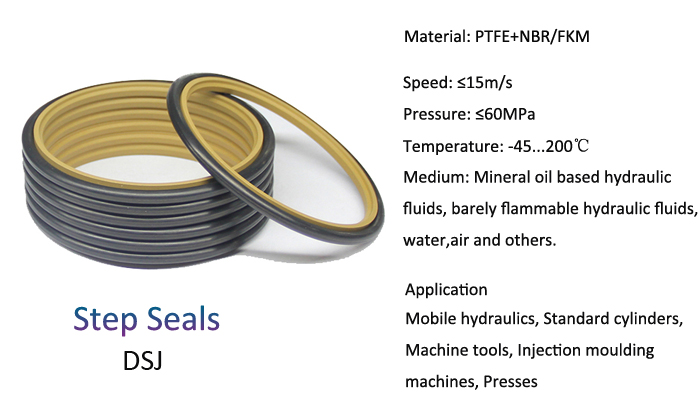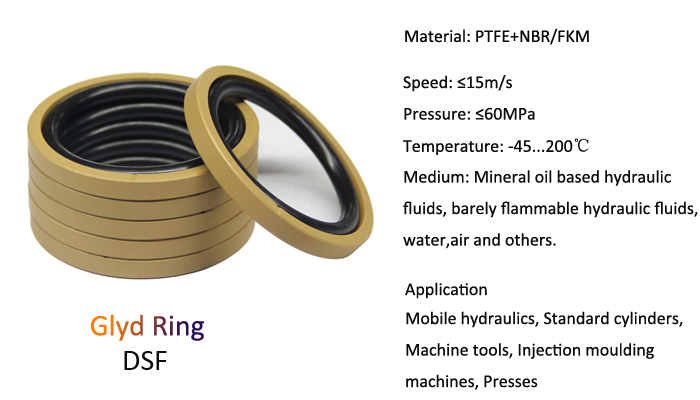Product Series
News
Introduction and application of compact seals
Update:2018-09-30
Compact seals consist of two or two more components. One part is a component with good lubrication performance and low friction factor; the other part is a component with sufficient elasticity, which greatly changes the integrated sealing performance.
Coaxial seals is a reciprocating sealing element in which the structure and the material are all combined. It is a combination of a modified PTFE slide ring with a filler material and a rubber ring (such as O-ring, square ring, X ring, etc.) as an elastomer.
According to its use, it can be divided into coaxial seal for piston (Glyd ring plus O-ring) and coaxial seal for piston rod (Step seal plus O-ring). Both the glyd ring and step seal are made of PTFE filled different fillers (such as bronze, graphite, carbon filber, asbestos, molybdenum disulfide, clay, etc.) according to different conditions of use.
Due to the self-lubricating properties of PTFE seals, coaxial seals are one of the few types of reciprocating seals with low dynamic friction resistance.
First, characteristics
Coaxial seal utilizes the good elastic deformation property of the O-ring, and the glyd ring (or step seal) is tightly attached to the sealing coupling surface to seal by the pre-compression force. O-ring does not directly contact the sealing coupling surface, and there is no problem that the seals are turned over, twisted, and squeezed into the gap.
Therefore, the coaxial seal has the following characteristics:
1. Glyd ring and step seal have extremely low friction coefficient(0.02-0.04), and the dynamic, static friction coefficient has a little change. Therefore, the movement is smooth and there is no crawling;
2. Good self-lubricating performance, coupling surface with metal is not easy to adhere;
3. Good sealing performance;
4. According to using condition, Can change the ratio and type of PTFE filler material to achieve the desired physical properties.
Second, application
Coaxial seal size series and tolerances and their installation groove form, size and tolerance have national standards. They are GB/T15242.1-2011 "Coaxial seal size series and tolerances for hydraulic cylinder piston and piston rod dynamic seal device" and GB/T15242.3-2011 "Coaxial Seal Groove Size Series and Tolerance for hydraulic cylinder piston and piston rod dynamic seal device".
Coaxial seals are widely used in the reciprocating seal device for medium, high pressure hydraulic cylinders. Its scope of application: working temperature is not more than 50MPa; Working speed is not more than 1m/s; Temperature range is -30...120℃
When using a coaxial seal, the choice of the clearance of the sealing coupling surface is related to the pressure of the working medium.
In order to prevent glyd ring and step seal from being squeezed into the gap of the sealing coupling surface, the gap value should be controlled strictly according to the requirements specified in the standard.
In addition, the quality of the sealing performance is also affected by the processing accuracy of the coupling surface and the surface roughness, which should be paid enough attention.


